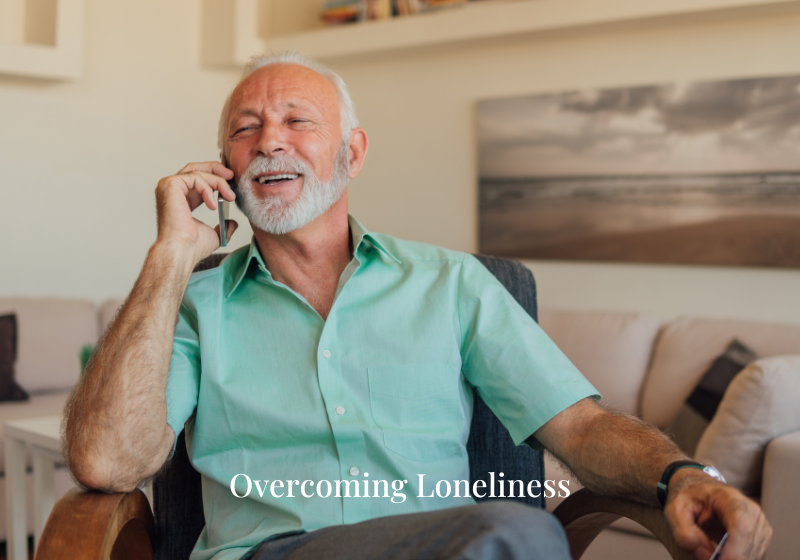The Hidden Epidemic
Loneliness and social isolation affect a significant portion of the senior population, with 25% reporting feelings of isolation and 37% experiencing loneliness, according to JAMA Network and the National Academies Press. These conditions have a profound impact on health, increasing the risk of chronic diseases such as heart disease, high blood pressure, and obesity. Chronic loneliness is also linked to a 56% higher risk of stroke, a burden comparable to smoking a pack of cigarettes daily. Beyond physical health, loneliness can also contribute to depression, anxiety, and cognitive decline, creating a cycle that is difficult to break without intervention.
Common Triggers
Several life events and circumstances often exacerbate feelings of loneliness in older adults:
- Holidays: Reminders of lost relationships and family gatherings can intensify feelings of loneliness, as older adults may find themselves comparing their current situation to cherished past traditions.
- Anniversaries and Personal Losses: Significant dates related to the passing of loved ones often reignite grief and highlight the absence of support systems.
- Pets: The loss of a beloved pet can leave a profound void, as pets often serve as companions and sources of unconditional love.
- Retirement and Downsizing: Retiring from a long-held career can result in a loss of daily social interaction and a sense of purpose. Similarly, moving to a smaller home or a new community can mean leaving behind familiar neighborhoods, friends, and routines.
- Limited Mobility: Physical restrictions, whether due to chronic illness, disability, or aging, reduce opportunities for socialization and increase reliance on others for daily needs. This can lead to frustration, diminished self-esteem, and deeper isolation.
How to Recognize Isolation: Identifying socially isolated individuals often requires careful observation and compassionate inquiry. Thoughtful questions can reveal underlying struggles:
- How often do you talk to family or friends?
- Do you feel like you have someone to rely on during tough times?
- Are you involved in any social, recreational, or community activities?
- Do you ever feel lonely or disconnected from others?
Listening attentively to their answers and observing body language can provide valuable insights into their emotional state.
Proven Strategies for Connection:
- Skill Building:
- Teaching digital literacy can empower older adults to stay connected with family and friends through video calls, messaging apps, and social media. Providing step-by-step guidance on accessing online resources and support services can make technology less intimidating.
- Intergenerational Relationships:
- Encouraging interactions between generations fosters mutual understanding and combats stereotypes. Activities like storytelling, teaching skills, or engaging in group projects can build meaningful connections.
- Community Groups:
- Joining support networks tailored to specific interests or needs, such as widows’ groups, chronic condition meetups, or Parkinson’s disease support circles, can reduce feelings of isolation.
- Volunteering:
- Contributing to community initiatives provides a sense of purpose and belonging. Roles can range from mentoring to helping with events or administrative tasks.
- Routine Socializing:
- Organizing regular engagements, such as book clubs, walking groups, or faith-based activities, helps establish structure and creates opportunities for connection.
Conversation Starters to Foster Engagement: Starting conversations with reserved individuals can seem challenging, but simple and empathetic prompts can break the ice:
- “Hi there, how’s your day going?”
- “What’s a favorite memory that always makes you smile?”
- “If you could visit any place, where would it be?”
- “I’d love to hear your thoughts on ___ (a shared activity or topic).”
The Importance of Action: Combatting loneliness requires proactive steps, but the rewards are immense. Not only can these interventions improve mental and physical health, but they also enhance the overall quality of life for older adults. By fostering connections, equipping individuals with tools to engage socially, and creating opportunities for meaningful interaction, we can help older adults rediscover joy and a sense of belonging. The journey to reducing loneliness starts with one small, thoughtful step—reaching out and making a connection.
References
- National Academies of Sciences, Engineering, and Medicine. (2020). Social Isolation and Loneliness in Older Adults: Opportunities for the Health Care System. Washington, DC: The National Academies Press. https://doi.org/10.17226/25663
- Holt-Lunstad, J., Smith, T. B., & Layton, J. B. (2010). Social Relationships and Mortality Risk: A Meta-analytic Review. PLoS Medicine, 7(7), e1000316. https://doi.org/10.1371/journal.pmed.1000316
- Valtorta, N. K., Kanaan, M., Gilbody, S., Ronzi, S., & Hanratty, B. (2016). Loneliness and Social Isolation as Risk Factors for Coronary Heart Disease and Stroke: Systematic Review and Meta-analysis of Longitudinal Observational Studies. Heart, 102(13), 1009–1016. https://doi.org/10.1136/heartjnl-2015-308790
- U.S. Surgeon General. (2023). Our Epidemic of Loneliness and Isolation: The U.S. Surgeon General’s Advisory on the Healing Effects of Social Connection and Community. https://www.hhs.gov/surgeongeneral/priorities/connection
- Cacioppo, J. T., & Patrick, W. (2008). Loneliness: Human Nature and the Need for Social Connection. New York: W.W. Norton & Company.
- Fighting Loneliness in Your Senior Years: How to Meet New People and Stay Active. Living to 100 Club blog.
- Finding a New Relationship as an Antidote to Loneliness. Living to 100 Club podcast.
This blog is informed by key takeaways from a presentation sponsored by the American Society on Aging and delivered by Carol Marak. Thanks to Ms. Marak for highlighting this important information. This blog is proudly hosted by the Living to 100 Club, founded by Dr. Joe Casciani. The Living to 100 Club is dedicated to promoting successful aging through education, inspiration, and practical resources. Our mission is to empower individuals to live longer, healthier, and more fulfilling lives. For more resources and programs, visit Living to 100 Club.
Loneliness and isolation harm older adults, raising risks for illness and depression. Discover strategies for connection and healthier living. Join our Club Insider membership today at Living to 100 Club for exclusive resources and support!
SHOP NOW: Quantum Squares energy bars with 100mg of organic caffeine for long-lasting, stable energy. Every delicious bar provides balanced nutrition with 10g of plant-based protein, healthy fats, and complex carbs. Use the Club’s promo code for an exclusive 25% discount!


